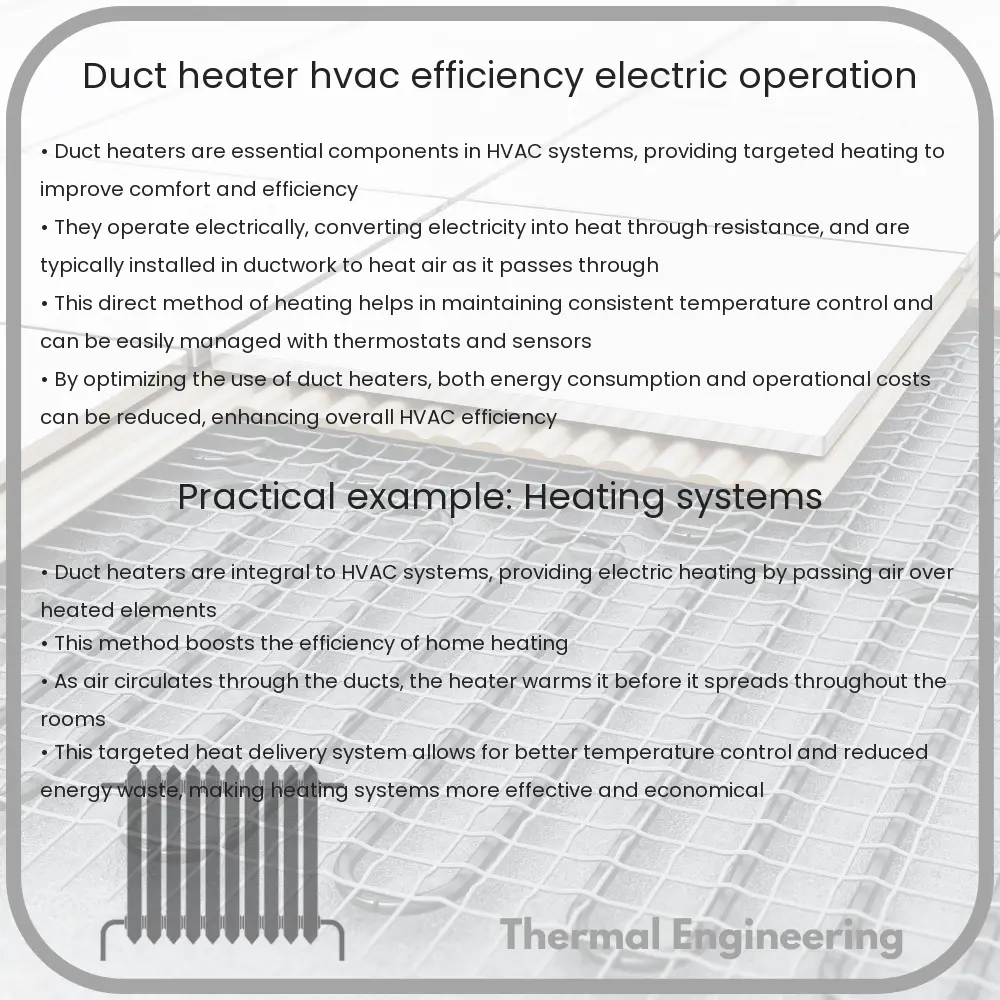Learn about duct heaters, essential for adding supplemental heat in HVAC systems, improving comfort and energy efficiency.

Understanding Duct Heaters in HVAC Systems
Duct heaters are a vital component in many Heating, Ventilation, and Air Conditioning (HVAC) systems, particularly useful in generating additional heat when required. Their design and operation directly affect the efficiency and functionality of HVAC systems, especially in residential, commercial, and industrial settings.
What are Duct Heaters?
A duct heater is an electric heating unit installed within the ductwork of an HVAC system. Its primary function is to add supplemental heat to the air passing through the ducts, ensuring that the temperature is adequately maintained throughout the entire space of a building or facility.
Types of Duct Heaters
There are several types of duct heaters, each designed to suit particular applications and efficiency needs:
- Electric resistance heaters: These are the most common type, using electric resistance elements to generate heat when electric current passes through them.
- Steam or hot water heaters: Utilize steam or hot water generated by a boiler to heat the air, suitable for systems where a boiler is already in place.
Components of Duct Heaters
Key components of duct heaters include:
- Heating elements: Typically made of nickel chromium (NiCr) wire, these are the core components that heat up as electric current flows through them.
- Thermostats: Regulate the temperature by switching the heating elements on and off based on the temperature setpoint.
- Controls and safety devices: Such as contactors, fuses, and overload relays that ensure the heater operates safely and efficiently.
How Do Duct Heaters Enhance HVAC Efficiency?
Duct heaters play a crucial role in enhancing HVAC efficiency in several ways:
- Zone control: They allow for the heating of specific zones within a building, which can lead to significant energy savings by heating only the areas that require warmth.
- Quick response: Electric duct heaters provide immediate heat, which can be beneficial in rapidly changing weather conditions or in buildings with varying occupancy levels.
- Supplemental heating: They help maintain desired temperatures without overburdening the primary HVAC system, especially during extremely cold weather.
Electric Operation and Safety
The operation of electric duct heaters is straightforward but must be handled with care to avoid safety hazards such as overheating or electrical fires. Key operational practices include:
- Maintaining proper airflow: Adequate airflow across the heating elements is crucial to prevent overheating and extend the lifespan of the heater.
- Regular maintenance: Periodic checks and maintenance of the heater’s components are necessary to ensure efficient operation and safety.
Installation and Considerations
Proper installation of duct heaters is critical to their performance and safety. Installation considerations include:
- Ensuring compatibility with existing ductwork and HVAC systems.
- Correct sizing of the heaters to meet the specific heating loads without excessive energy consumption.
- Compliance with local codes and standards regarding electrical systems and heating devices.
Conclusion
Duct heaters are an efficient solution for enhancing the performance and comfort of HVAC systems. By understanding the different types of duct heaters, their components, and operational dynamics, building managers can optimize their heating needs while ensuring safety and energy efficiency.